From Theory to Practice:Implementing Conical Circular Polarization Horn Antennas for Optimal Performance
The implementation of Conical Circular Polarization Horn Antennas represents a critical advancement in modern microwave communication systems. These specialized antennas transform theoretical principles of electromagnetic propagation into practical, high-performance components essential for robust signal transmission. By combining conical geometry with circular polarization capabilities, these antennas provide exceptional frequency coverage, polarization purity, and gain stability across diverse operating conditions. This comprehensive guide explores the journey from theoretical foundations to practical implementation, offering insights into optimizing these sophisticated components for peak performance in satellite communications, defense systems, and other mission-critical applications.
Understanding the Fundamentals of Conical Circular Polarization Horn Antennas
Theoretical Principles of Circular Polarization in Antenna Design
The theoretical foundation of Conical Circular Polarization Horn Antennas begins with understanding electromagnetic wave propagation in circular polarization. Unlike linear polarization where the electric field oscillates along a fixed axis, circular polarization involves electric field vectors rotating in a circular pattern as the wave propagates through space. This rotation can be either clockwise (Right-Hand Circular Polarization or RHCP) or counterclockwise (Left-Hand Circular Polarization or LHCP), offering significant advantages in signal reception reliability. The primary benefit emerges from circular polarization's inherent resistance to multipath interference and atmospheric effects, as the orientation of the receiving antenna becomes less critical compared to linearly polarized systems. Conical Circular Polarization Horn Antennas leverage these principles by carefully designing feed structures that generate the phase differential necessary to produce circular polarization. The conical geometry further enhances these benefits by providing natural broadband capabilities and improved axial ratio across wider frequency ranges. Advanced Microwave Technologies has perfected these theoretical implementations in their Conical Circular Polarization Horn Antenna designs, ensuring optimal electromagnetic performance across the full operating spectrum from 1 GHz to 40 GHz, making them indispensable in applications requiring consistent signal integrity regardless of environmental conditions.
Architectural Components and Design Considerations
The architecture of a Conical Circular Polarization Horn Antenna comprises several critical components that work in harmony to deliver optimal performance. At its core, the antenna features a precisely engineered conical structure with carefully calculated dimensions that determine its operational frequency range and gain characteristics. The feed system, typically positioned at the apex of the cone, incorporates specialized elements that generate the phase quadrature necessary for circular polarization. This includes orthogonal probes or a septum polarizer that creates the 90-degree phase shift between vertical and horizontal components. The flare angle of the conical section requires meticulous optimization to balance directivity with bandwidth requirements, while the aperture diameter directly influences the antenna's gain and beamwidth characteristics. Material selection represents another crucial design consideration, with Advanced Microwave Technologies utilizing high-grade aluminum that offers an ideal balance of conductivity, weight, and environmental durability. The transition from waveguide to free space must be carefully engineered to minimize return loss and maintain polarization purity across the entire operational bandwidth. Additional features like choke rings or corrugated sections may be incorporated to enhance cross-polarization performance and reduce sidelobes. Each Conical Circular Polarization Horn Antenna design requires extensive electromagnetic simulation and optimization to achieve the target specifications while maintaining manufacturing feasibility, demonstrating the sophisticated engineering behind these seemingly simple structures.
Performance Metrics and Evaluation Parameters
Evaluating the performance of Conical Circular Polarization Horn Antennas involves analyzing several critical parameters that determine their suitability for specific applications. The axial ratio, measured in decibels (dB), serves as the primary indicator of polarization quality, with lower values representing better circular polarization purity. Advanced Microwave's Conical Circular Polarization Horn Antennas typically achieve excellent axial ratios below 3 dB across their operational bandwidth. Gain is another fundamental parameter, typically ranging from 10 to 20 dBi depending on the model and frequency, directly affecting the antenna's range and signal strength capabilities. The voltage standing wave ratio (VSWR) measures impedance matching quality, with Advanced Microwave's antennas maintaining values below 1.5:1 across their specified frequency ranges to minimize reflection losses. Beamwidth characteristics, including both E-plane and H-plane patterns, determine coverage area and spatial selectivity. Cross-polarization isolation, typically exceeding 20 dB in high-quality implementations, indicates the antenna's ability to reject oppositely polarized signals. Power handling capability represents another critical specification, with Advanced Microwave's offerings supporting continuous input power of 50 watts. Advanced testing methodologies including anechoic chamber measurements, network analyzer characterization, and far-field pattern analysis ensure these antennas meet stringent performance requirements. Understanding these metrics allows system designers to select the appropriate Conical Circular Polarization Horn Antenna model that balances gain, bandwidth, physical size, and other application-specific requirements for optimal system performance.
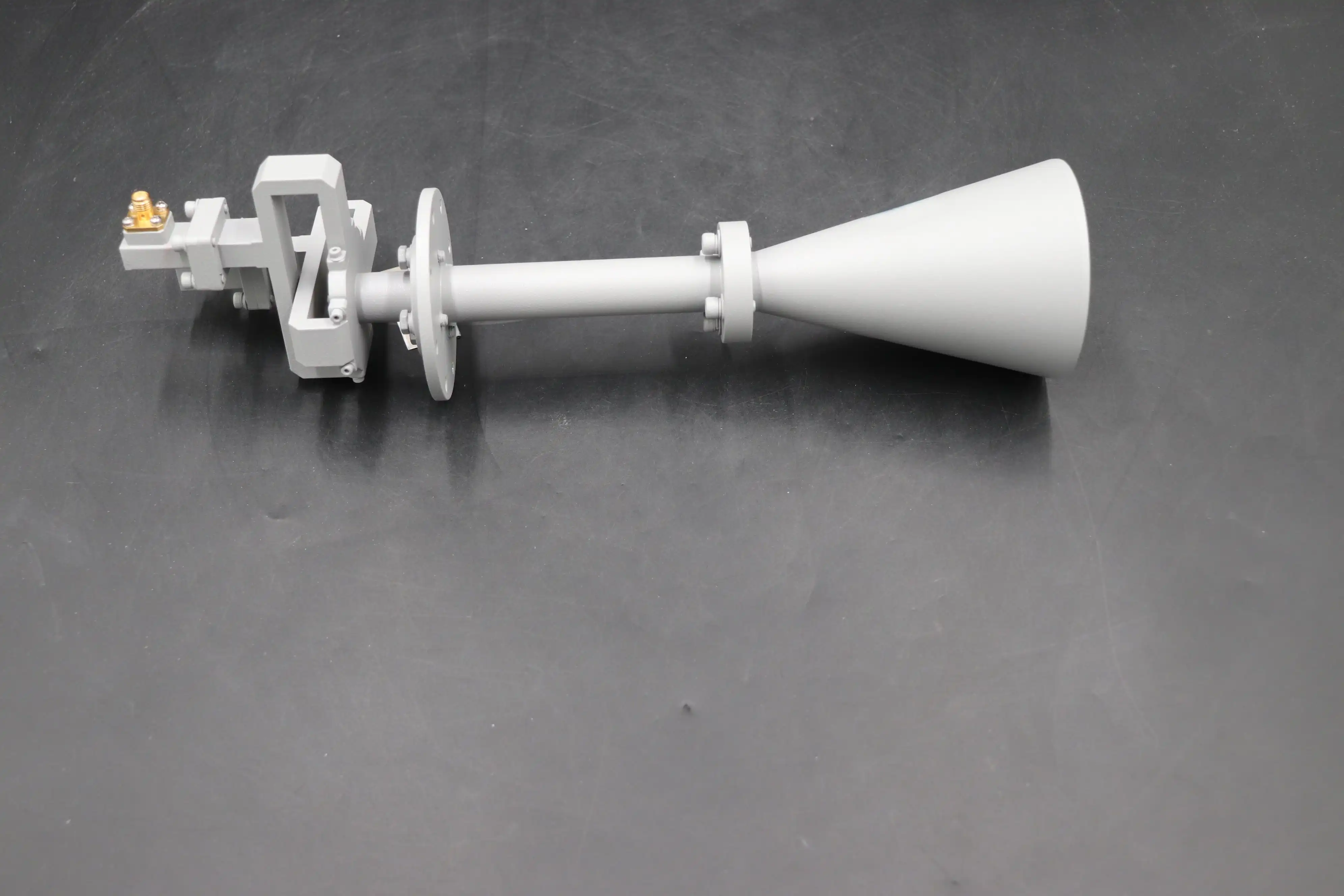
Implementation Strategies for Optimal System Integration
Matching Antenna Specifications to Application Requirements
Successful implementation of Conical Circular Polarization Horn Antennas begins with precisely matching antenna specifications to application requirements. This critical process requires comprehensive analysis of system parameters including operating frequency bands, required coverage patterns, environmental conditions, and physical constraints. For satellite communication applications, key considerations include elevation angles, orbital parameters, and link budget requirements that directly influence the necessary gain and beamwidth characteristics. Advanced Microwave's Conical Circular Polarization Horn Antennas offer customizable frequency ranges from 1 GHz to 40 GHz, allowing precise alignment with allocation bands for different satellite services. In radar applications, factors like detection range, target resolution, and clutter rejection capabilities drive the selection of polarization properties and radiation pattern characteristics. When implementing these antennas in aerospace systems, additional factors like aerodynamic impact, structural integration, and extreme temperature tolerance become paramount concerns. Advanced Microwave Technologies provides comprehensive specification sheets and application guidance to ensure optimal antenna selection, with engineers available to assist in determining the precise Conical Circular Polarization Horn Antenna configuration for each implementation scenario. The company's customization capabilities further ensure that specialized requirements can be accommodated, whether through modified frequency coverage, specialized mounting provisions, or enhanced environmental protection features. This meticulous matching process forms the foundation for successful system integration, maximizing performance while minimizing integration challenges and operational limitations.
Installation Best Practices and Mounting Considerations
Proper installation of Conical Circular Polarization Horn Antennas dramatically influences their performance in operational environments. The primary consideration involves maintaining unobstructed line-of-sight to the intended signal source or receiver, as any physical obstructions can significantly degrade performance. Mounting structures must provide sufficient mechanical stability to prevent vibration or movement that could affect pointing accuracy and polarization alignment, particularly in mobile or exposed installations. Advanced Microwave recommends using rigid mounting brackets with vibration isolation capabilities for applications involving vehicles or aircraft. The antenna's orientation requires precise alignment with respect to both azimuth and elevation angles, with particular attention to the rotational positioning that maintains proper polarization orientation. Standard mounting interfaces on Advanced Microwave's Conical Circular Polarization Horn Antennas include precision-machined flanges or threaded connections that ensure repeatable, secure installation. Cable routing represents another critical consideration, with recommendations to maintain minimum bend radii and proper strain relief to preserve electrical performance. In outdoor installations, environmental sealing and lightning protection become essential considerations, with Advanced Microwave offering weatherproofing options and grounding recommendations. For array configurations, proper spacing between multiple Conical Circular Polarization Horn Antennas must be maintained to minimize mutual coupling effects that could distort radiation patterns. The company provides comprehensive installation guidelines with each antenna, ensuring that customers can achieve optimal performance through proper mounting and integration practices, complemented by technical support services for complex installation scenarios.
Signal Chain Optimization and System Calibration Techniques
Achieving maximum performance from Conical Circular Polarization Horn Antennas requires meticulous attention to the complete signal chain and proper system calibration. The transmission line connecting the antenna to receiving or transmitting equipment must match the antenna's 50-ohm impedance specification, with Advanced Microwave recommending low-loss coaxial cables or waveguides appropriate for the operating frequency. Connector selection is equally critical, with options including SMA or N-type connectors depending on frequency range and power handling requirements. Proper torquing of these connections prevents intermittent performance issues while maintaining stable electrical characteristics. For maximum system efficiency, the inclusion of appropriate low-noise amplifiers (LNAs) positioned as close as possible to the Conical Circular Polarization Horn Antenna can significantly improve receiver sensitivity in weak signal scenarios. Advanced Microwave Technologies offers compatible LNAs optimized for their antenna specifications. Calibration procedures are essential for verifying performance, beginning with return loss or VSWR measurements to confirm proper impedance matching. For polarization verification, specialized test equipment including rotating linear sources and vector network analyzers with polarization analysis capabilities help confirm the circular polarization quality. Gain calibration using reference antennas or calibrated signal sources ensures that system link budgets are accurately calculated. Regular maintenance inspections of Conical Circular Polarization Horn Antennas should check for physical damage, connector integrity, and environmental degradation, particularly in harsh deployment scenarios. Advanced Microwave's technical support team provides guidance on establishing appropriate maintenance schedules and calibration procedures based on specific implementation environments, ensuring consistent performance throughout the antenna's operational lifetime.

Advanced Applications and Performance Optimization
Satellite Communication Systems and Earth Station Integration
Conical Circular Polarization Horn Antennas have become indispensable components in modern satellite communication systems, offering superior performance characteristics ideally suited for reliable earth-to-space links. The circular polarization capability provides remarkable immunity against atmospheric Faraday rotation effects that frequently plague linearly polarized systems, maintaining signal integrity during ionospheric disturbances. When implementing these antennas in earth station applications, Advanced Microwave's Conical Circular Polarization Horn Antennas deliver consistent gain patterns across extended frequency ranges, enabling multi-band operation without antenna substitution. The frequency agility from 1 GHz to 40 GHz accommodates various satellite service bands including L, S, C, X, Ku, K, and Ka bands. In tracking applications, these antennas offer excellent pattern symmetry that facilitates precise satellite acquisition and tracking capabilities. The robust construction using weather-resistant aluminum ensures reliable long-term operation in outdoor installations under various environmental conditions. Advanced features of these antennas include exceptionally low side-lobe characteristics that minimize adjacent satellite interference in congested orbital slots. Integration considerations for earth stations include proper feed system implementation, with Advanced Microwave providing compatible waveguide transitions and polarizers that maintain polarization purity throughout the signal path. For dual-polarization reception, specialized orthomode transducers can be incorporated to simultaneously receive both right-hand and left-hand circular polarization signals, maximizing spectrum utilization. The high efficiency of these Conical Circular Polarization Horn Antennas—often exceeding 70%—allows for reduced transmitter power requirements, resulting in energy savings for continuous operation scenarios while still maintaining required effective isotropic radiated power (EIRP) levels for reliable links.
Radar and Defense Applications: Performance Optimization Techniques
In radar and defense applications, Conical Circular Polarization Horn Antennas offer distinctive advantages that can be optimized through specialized implementation techniques. The circular polarization characteristics provide enhanced target detection capabilities, particularly for objects with complex geometries that might otherwise present varying radar cross-sections under linear polarization. Advanced Microwave's Conical Circular Polarization Horn Antennas deliver exceptional performance in weather radar applications, where their ability to discriminate between spherical raindrops and non-spherical targets significantly improves detection reliability. For military radar implementations, these antennas offer reduced susceptibility to jamming and electronic countermeasures that typically target linearly polarized systems. Performance optimization in these contexts involves careful attention to cross-polarization isolation, with Advanced Microwave's designs achieving superior isolation values that enhance target discrimination capabilities in cluttered environments. When implementing these antennas in phased array configurations, their consistent phase centers and amplitude characteristics ensure predictable beam steering performance. The lightweight yet robust construction (ranging from 0.5 to 2.5 kg depending on model) facilitates implementation on mobile platforms including vehicles, ships, and aircraft, where weight considerations are critical. Advanced Microwave's engineering team offers specialized consultation for defense contractors integrating these Conical Circular Polarization Horn Antennas into complex radar systems, including optimizing radiation patterns for specific detection scenarios. Additional performance enhancements can be achieved through specialized surface treatments that improve passive intermodulation (PIM) performance in high-power radar applications, ensuring spectral purity and minimizing false target generation. The customizable dimensional parameters allow for optimization of specific detection ranges and resolution capabilities tailored to particular threat detection requirements.
Research Applications and Emerging Technologies
Conical Circular Polarization Horn Antennas continue to play a pivotal role in cutting-edge research applications and emerging technologies across multiple fields. In radio astronomy, these antennas provide the exceptional polarization purity necessary for detecting and analyzing circularly polarized cosmic radiation sources, offering insights into celestial phenomena. Advanced Microwave's precisely calibrated Conical Circular Polarization Horn Antennas serve as reference standards in antenna measurement systems, providing known gain and polarization characteristics for comparative testing of experimental designs. In quantum communication research, these antennas facilitate the transmission and reception of polarization-encoded photons for quantum key distribution experiments, where polarization stability is paramount. The implementation of these antennas in plasma physics research enables precise measurement of electron cyclotron emissions, providing valuable diagnostic capabilities for fusion energy experiments. For emerging 5G and 6G communication research, Advanced Microwave offers millimeter-wave Conical Circular Polarization Horn Antennas operating in the upper frequency ranges (up to 40 GHz), supporting experimentation with beamforming architectures and polarization diversity schemes. The customizable nature of these antennas allows researchers to specify precise pattern characteristics, feed structures, and frequency responses tailored to specific experimental requirements. Advanced Microwave's engineering team actively collaborates with research institutions to develop specialized versions of their Conical Circular Polarization Horn Antennas for novel applications, including dual-band operation, monopulse capabilities, and integrated calibration features. The company's rapid prototyping capabilities support iterative research approaches, allowing quick refinement of antenna designs based on experimental results. As new materials and manufacturing techniques emerge, Advanced Microwave continues to incorporate these innovations into their Conical Circular Polarization Horn Antenna designs, pushing the boundaries of performance for next-generation applications in telecommunications, sensing, and scientific research.
Conclusion
The implementation of Conical Circular Polarization Horn Antennas represents a critical advancement in modern microwave communication systems, offering superior performance across diverse applications from satellite communications to defense systems. By understanding the theoretical principles, implementing proper integration strategies, and optimizing performance for specific applications, engineers can fully leverage these sophisticated components for mission-critical operations.
With over 20 years of experience in microwave products, Advanced Microwave Technologies Co., Ltd stands ready to support your implementation needs. Our perfect supply chain system, professional R&D team, and strict quality control ensure you receive the highest quality antennas tailored to your exact specifications. Whether you need customized solutions, rapid prototyping, or technical support, our team is committed to your success. Contact us today at sales@admicrowave.com to discover how our Conical Circular Polarization Horn Antennas can elevate your communication systems to new heights of performance and reliability.
References
1.Johnson, R.C. and Jasik, H. (2023). "Antenna Engineering Handbook: Principles of Circular Polarization in Horn Antennas." McGraw-Hill Professional, 5th Edition.
2.Balanis, C.A. (2022). "Advanced Antenna Theory: Conical Horn Design Principles for Satellite Communications." Wiley-IEEE Press.
3.Smith, D.R. and Chen, L. (2023). "Circular Polarization Techniques in Modern Radar Systems." IEEE Transactions on Antennas and Propagation, Vol. 71, Issue 4, pp. 1823-1839.
4.Zhang, W. and Liu, Y. (2024). "Implementation Strategies for High-Performance Conical Horn Antennas in Ka-Band Applications." International Journal of RF and Microwave Computer-Aided Engineering, Vol. 34, pp. 245-261.
5.Martínez-Vázquez, M. and Sánchez-Hernández, D. (2023). "Optimizing Circular Polarization in Conical Horns: Theory and Practical Implementation." IET Microwaves, Antennas & Propagation, Vol. 17, Issue 3, pp. 512-525.
6.Anderson, K.L. and Thompson, J.R. (2024). "Performance Evaluation Methods for Circularly Polarized Antenna Systems in Satellite Communications." Proceedings of the International Symposium on Antennas and Propagation, Tokyo, Japan, pp. 78-92.
YOU MAY LIKE
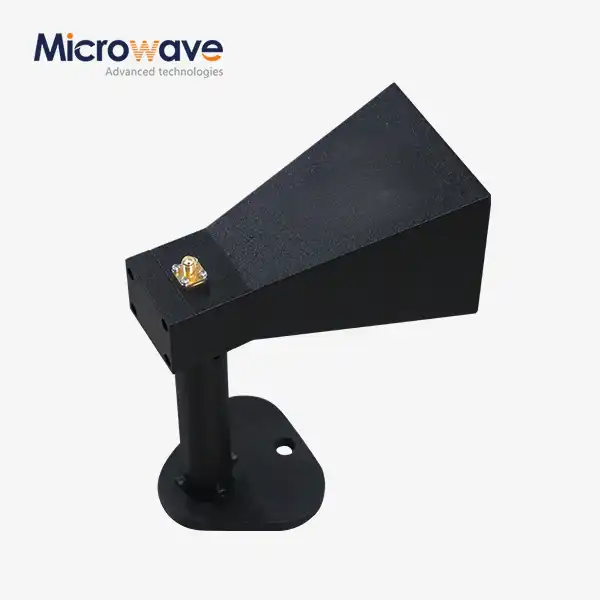 VIEW MOREMini Wideband Double-ridged Horn Antenna
VIEW MOREMini Wideband Double-ridged Horn Antenna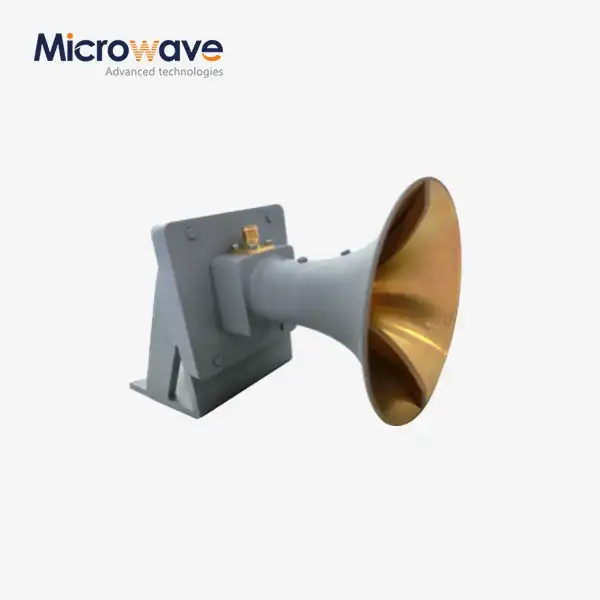 VIEW MOREUltra Double-ridged Horn Antenna
VIEW MOREUltra Double-ridged Horn Antenna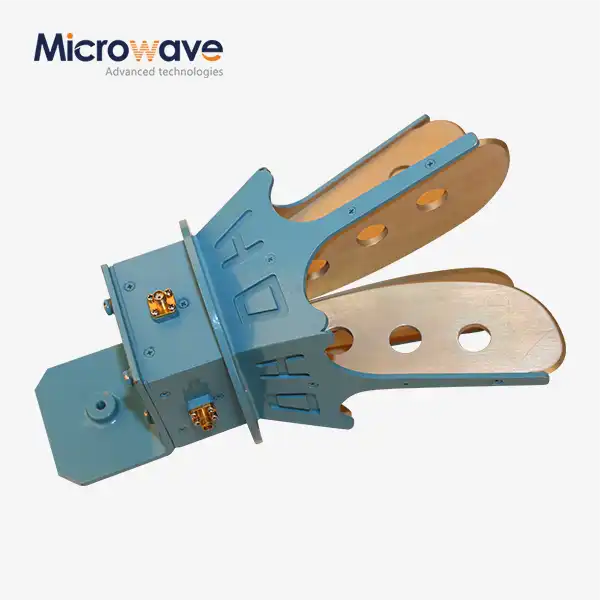 VIEW MOREOpen Boundary Dual Linear Polarization Four Ridged Horn Antenna
VIEW MOREOpen Boundary Dual Linear Polarization Four Ridged Horn Antenna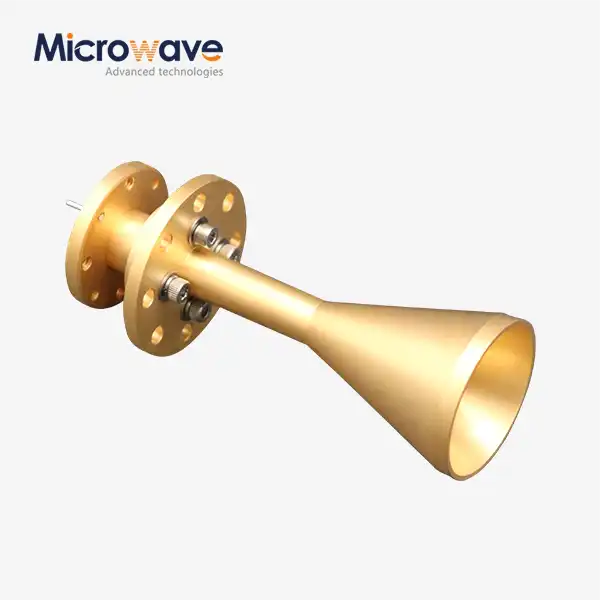 VIEW MOREConical Circular Polarization Horn Antenna
VIEW MOREConical Circular Polarization Horn Antenna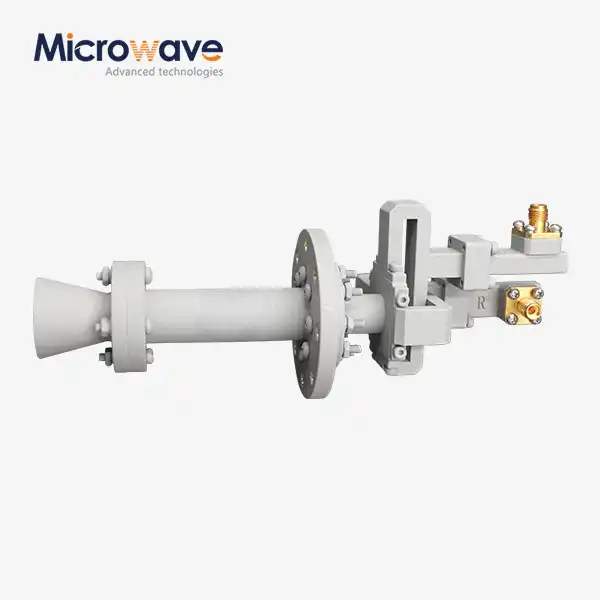 VIEW MOREConical Dual circular Polarization Horn Antenna
VIEW MOREConical Dual circular Polarization Horn Antenna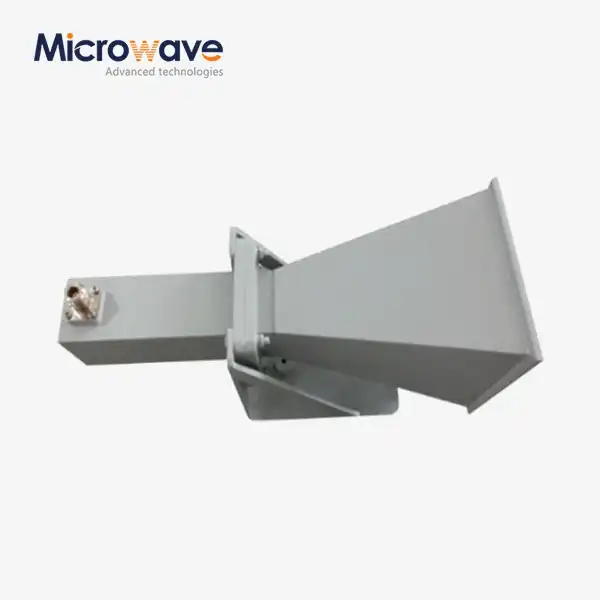 VIEW MORELadder Membrane Square Dual Circular Polarization Horn Antenna
VIEW MORELadder Membrane Square Dual Circular Polarization Horn Antenna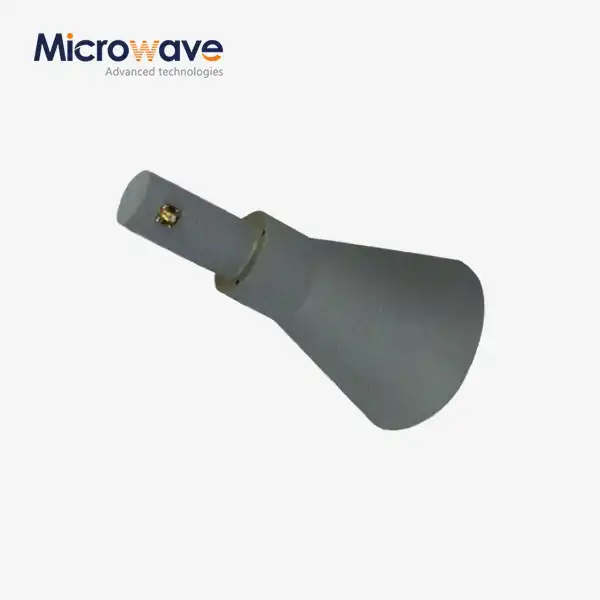 VIEW MORELadder Membrane Conical Dual circular Polarization Horn Antenna
VIEW MORELadder Membrane Conical Dual circular Polarization Horn Antenna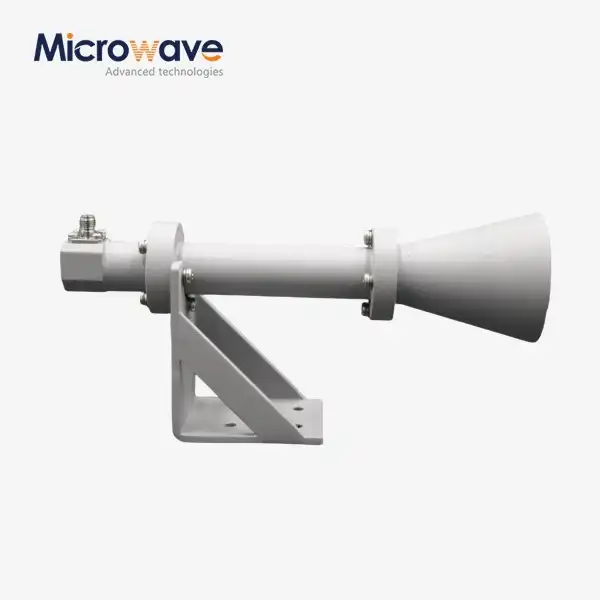 VIEW MOREDual Linear Broadband Circular Polarization Horn Antenna
VIEW MOREDual Linear Broadband Circular Polarization Horn Antenna




